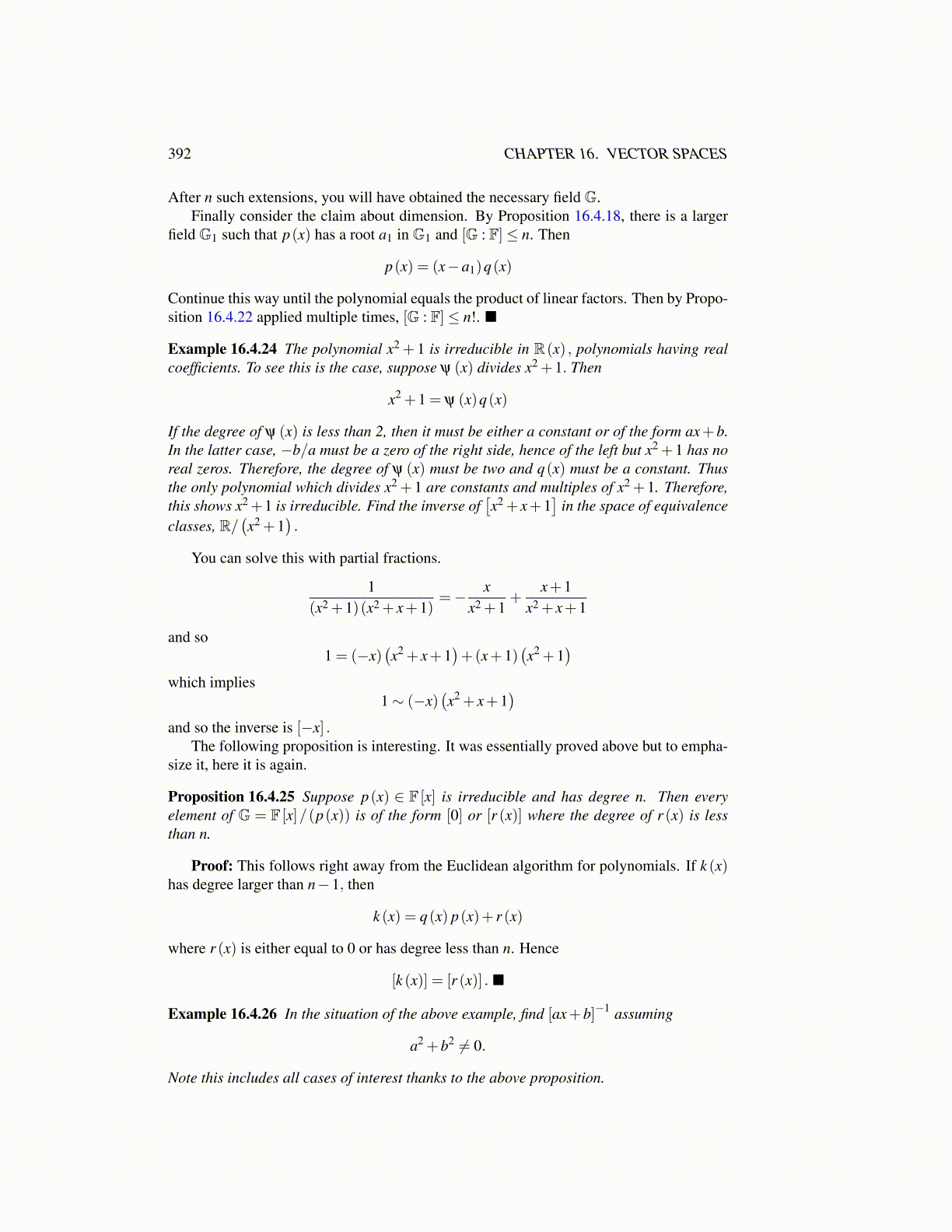
392 CHAPTER 16. VECTOR SPACES
After n such extensions, you will have obtained the necessary field G.Finally consider the claim about dimension. By Proposition 16.4.18, there is a larger
field G1 such that p(x) has a root a1 in G1 and [G : F]≤ n. Then
p(x) = (x−a1)q(x)
Continue this way until the polynomial equals the product of linear factors. Then by Propo-sition 16.4.22 applied multiple times, [G : F]≤ n!. ■
Example 16.4.24 The polynomial x2 + 1 is irreducible in R(x) , polynomials having realcoefficients. To see this is the case, suppose ψ (x) divides x2 +1. Then
x2 +1 = ψ (x)q(x)
If the degree of ψ (x) is less than 2, then it must be either a constant or of the form ax+b.In the latter case, −b/a must be a zero of the right side, hence of the left but x2 +1 has noreal zeros. Therefore, the degree of ψ (x) must be two and q(x) must be a constant. Thusthe only polynomial which divides x2 +1 are constants and multiples of x2 +1. Therefore,this shows x2+1 is irreducible. Find the inverse of
[x2 + x+1
]in the space of equivalence
classes, R/(x2 +1
).
You can solve this with partial fractions.
1(x2 +1)(x2 + x+1)
=− xx2 +1
+x+1
x2 + x+1
and so1 = (−x)
(x2 + x+1
)+(x+1)
(x2 +1
)which implies
1∼ (−x)(x2 + x+1
)and so the inverse is [−x] .
The following proposition is interesting. It was essentially proved above but to empha-size it, here it is again.
Proposition 16.4.25 Suppose p(x) ∈ F [x] is irreducible and has degree n. Then everyelement of G = F [x]/(p(x)) is of the form [0] or [r (x)] where the degree of r (x) is lessthan n.
Proof: This follows right away from the Euclidean algorithm for polynomials. If k (x)has degree larger than n−1, then
k (x) = q(x) p(x)+ r (x)
where r (x) is either equal to 0 or has degree less than n. Hence
[k (x)] = [r (x)] . ■
Example 16.4.26 In the situation of the above example, find [ax+b]−1 assuming
a2 +b2 ̸= 0.
Note this includes all cases of interest thanks to the above proposition.